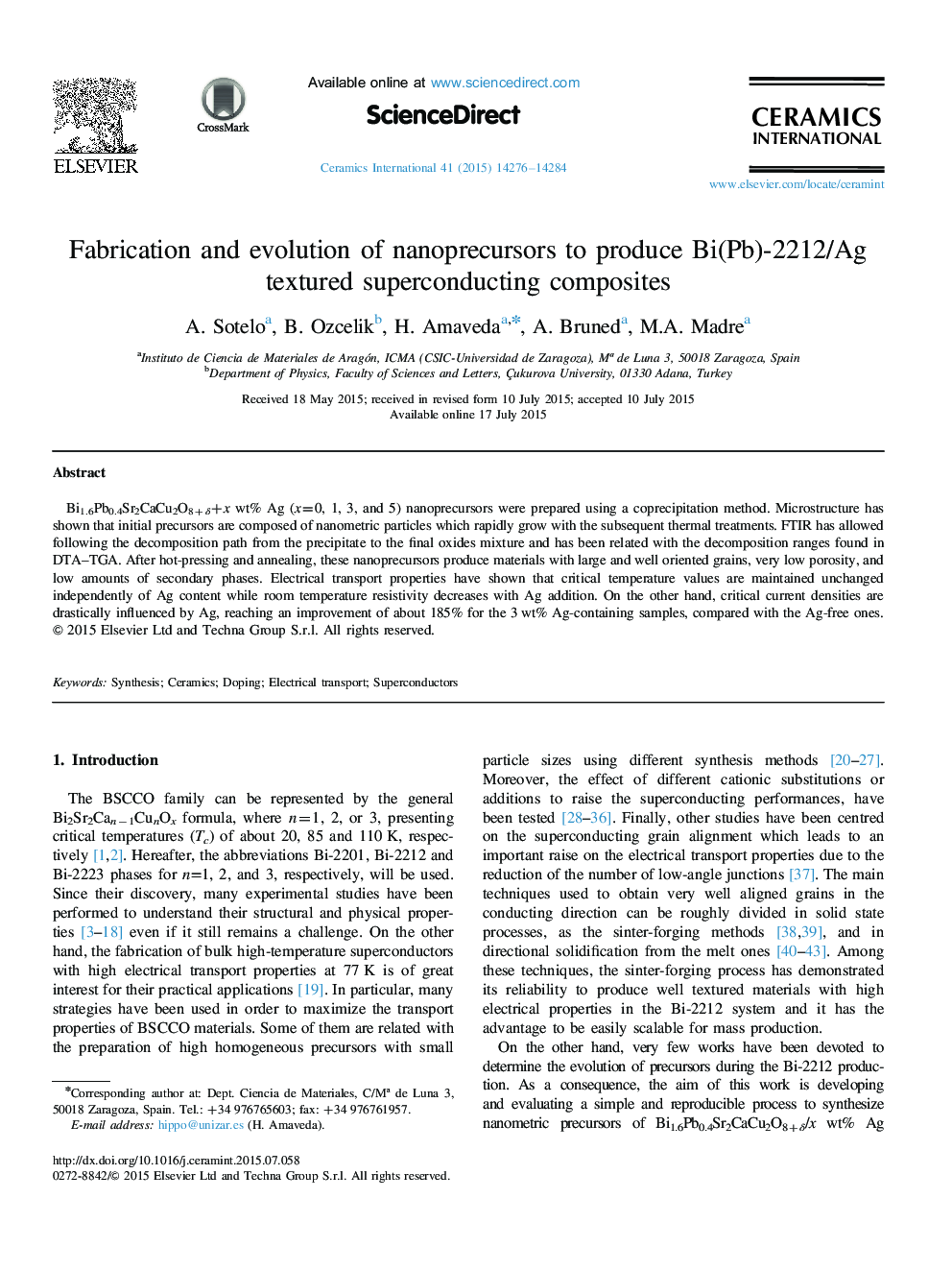| Article ID | Journal | Published Year | Pages | File Type |
|---|---|---|---|---|
| 1459341 | Ceramics International | 2015 | 9 Pages |
Bi1.6Pb0.4Sr2CaCu2O8+δ+x wt% Ag (x=0, 1, 3, and 5) nanoprecursors were prepared using a coprecipitation method. Microstructure has shown that initial precursors are composed of nanometric particles which rapidly grow with the subsequent thermal treatments. FTIR has allowed following the decomposition path from the precipitate to the final oxides mixture and has been related with the decomposition ranges found in DTA–TGA. After hot-pressing and annealing, these nanoprecursors produce materials with large and well oriented grains, very low porosity, and low amounts of secondary phases. Electrical transport properties have shown that critical temperature values are maintained unchanged independently of Ag content while room temperature resistivity decreases with Ag addition. On the other hand, critical current densities are drastically influenced by Ag, reaching an improvement of about 185% for the 3 wt% Ag-containing samples, compared with the Ag-free ones.
